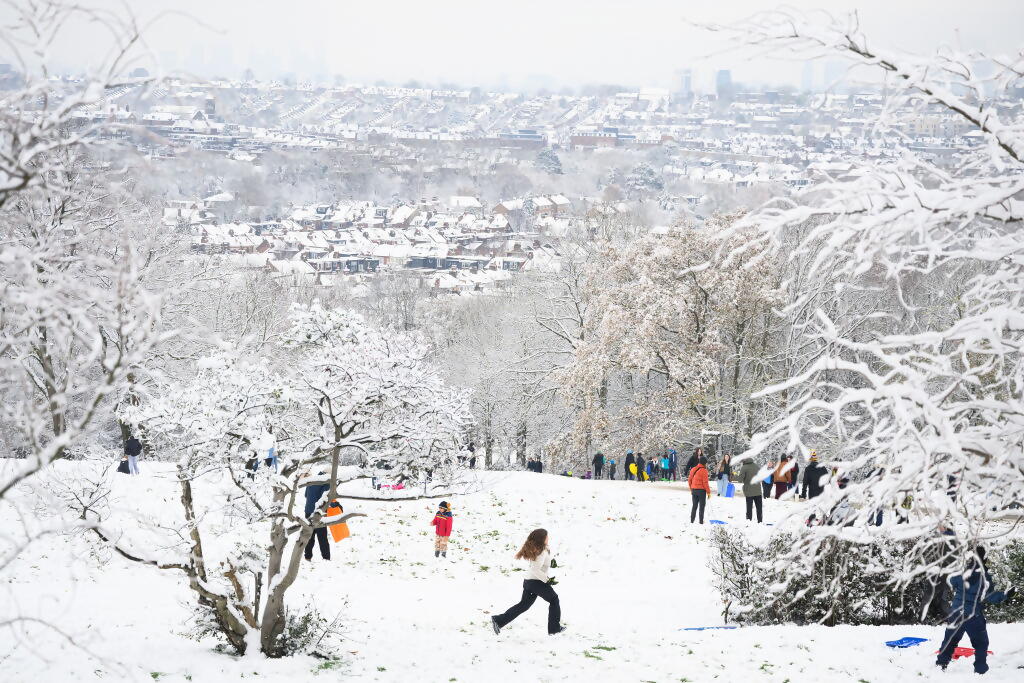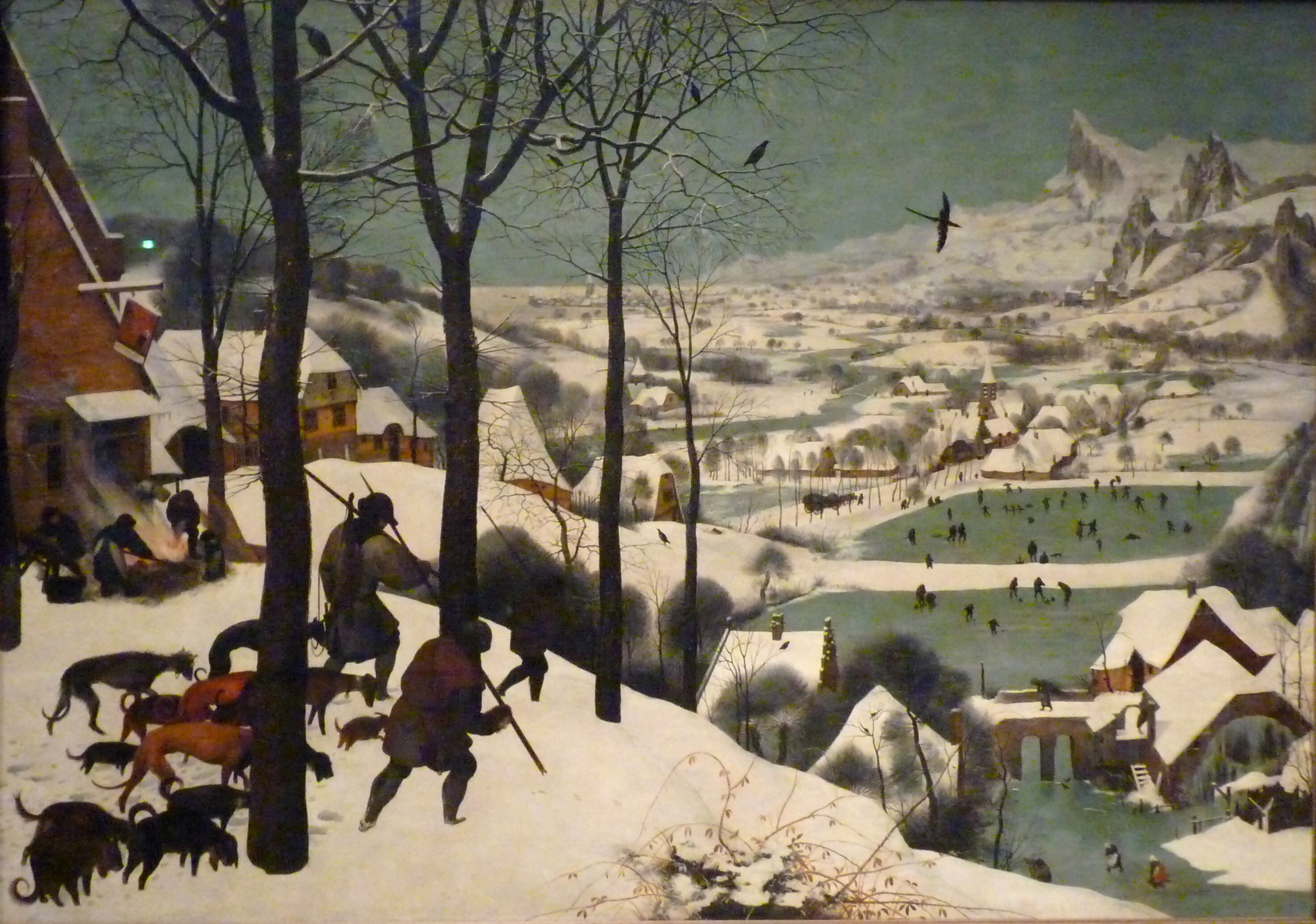
What is it about the snow that makes us giddy? The fact that we so rarely see it these days (in Britain, at least)? Perhaps. The way that, Midas-like, it transforms everything it touches (a branch, a lamppost, a bin lid? Yes, that too. Its deep association with Christmas? Certainly that. Or the way that it replaces the daily grind – school, work, travel – with frolicking and fun? Undoubtedly.
Leon Neal’s photograph of a snow-laden Alexandra Park, taken on Monday (December 12th), captures all of this. One glimpse at this image reveals it: snow’s in, school’s out.
You can almost hear the shrieks of delight coming from the children, their brightly coloured plastic sledges in tow. Less than two weeks before the big day, the uniform grey of suburban London has been transformed into a winter wonderland: this is the stuff of Christmas cards.
Neal’s photo reminds me of another snowy image that has also become classic Christmas card fodder: Pieter Bruegel the Elder’s 1565 oil painting, The Hunters in the Snow. Look at the two images side by side: the resemblances are striking.

Breugel’s ‘The Hunters In The Snow’, 1565
Like Bruegel’s, Neal’s point of view is from the top of a hill, surrounded by black-branched trees dusted with snow and looking down onto a populated valley below. True, the London of Neal’s 2022 photograph is more built up, but the peaked, snow-covered roofs really aren’t so different from Bruegel’s. And if you look closely, in the upper left corner of the photo, you’ll even spot a church spire that looks uncannily like the one in Bruegel’s valley.
Then there are the figures. In both images, we, the viewer, are placed at a remove from the action: all of the people in both the painting and the photo have their backs towards us, even as they diminish into tiny silhouettes on the horizon. So far, so similar, but there is one crucial distinction in these images: work and play.
Bruegel’s painting is often used as a Christmas card, partly because of the snow and somewhat, I would guess, because of the scene of merriment playing out on the frozen lake. But the figures in the foreground tell a different story. These hunters are returning worn out from a disappointing chase. The dogs look tired; tiny tracks in the snow from a hare have escaped, and their only catch is a lanky fox.
To a contemporary eye, Bruegel’s painting is quaint and picturesque – the stuff of Christmas cards. But to the eye of Bruegel’s contemporaries, this painting would have been a reminder of the hardships that every dusting of snow brought with it. The dark clouds are evidence of this; so are the ominous crows nestling in the bare trees and the magpie (associated with the devil in Danish culture) in flight. In an era dependent on living off the land, the snow didn’t simply signal an opportunity to get your skates on; it represented the seasonal challenges that the deepest winter brought.
Most of us living in Britain’s urban centres today have minimal conception of this: when the snow comes, we can snap our laptops shut for an hour or two and run out into the street for an impromptu snowball fight. The trains aren’t running? Who cares – it’s Christmas! Of course, I generalise – there are still many, in both rural and urban areas across the country, who feel the awful bite of the snow – but our sense of unbridled fun is undoubtedly a modern sensibility.
In the age of the digital nomad, we face a new problem. Now that everybody has the potential to WFH, heavy snowfall is no longer a prerequisite for magical fun times. With Zoom classes embedded into the post-Covid curriculum, even school children don’t get to enjoy the sacred snow day! In a few hundred years, maybe Neal’s photo will be evidence of a bygone time, an age before the metaverse when we could actually go outside and play in the snow.
Then again, for all the changes that the last 500 years or so have wrought, Bruegel’s distant villagers on the ice don’t look so different from the children in Neal’s photo. Whether facing the agricultural hardships of cold weather or being stuck inside and working online, there’s still something about the snow that transcends time and circumstance – especially at Christmas.
So, with every (Bruegel-covered) Christmas card we write – and despite next week’s wetter, warmer weather forecast – Neal’s glistening photo feels like fuel for our undying dream of a white Christmas. Here’s hoping.


